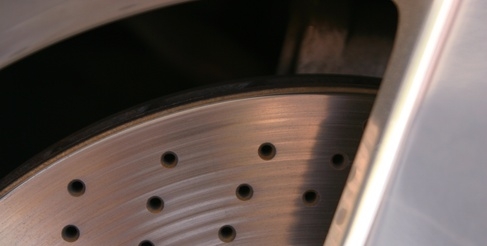
Brake fluid is an often overlooked fluid in a vehicle, but with most vehicles with ABS, this is a very important maintenance item. Brake fluid is hydroscopic, which means it attracts and retains water. When too much water gets into the brake fluid, it loses its ability to resist high temperatures and rusting. Flushing the brakes will get all new fluid into the master cylinder and throughout the entire brake system.
A gravity flush is the least commonly used flush procedure. To gravity bleed, you simply jack up the vehicle and open all of the bleeder valves on the brake calipers. Allow the vehicle to sit until no fluid remains in the master cylinder, then add new brake fluid to the master cylinder and let the vehicle sit again. Repeat this procedure until only clean brake fluid comes out of the bleeder valves. This is, by far, the most time-consuming, but thorough, procedure.
A pressure bleed is the most common flush procedure in a repair shop. This method starts with sucking all of the fluid out of the master cylinder and adding new fluid. Then, while an assistant opens all of the bleeder valves, the brake pedal is depressed, and the old fluid flows out of the bleeder valves. The assistant then closes the lines, and the brake pedal is released. This process is repeated until only clean fluid flows from the bleeder valves.
The final method of brake flushing, which is becoming more common, is using a machine to bleed the brakes. The machine has five tubes: one goes into the master cylinder while the other four connect to the bleeder valves. The machine then sucks all of the fluid from the master cylinder and brake lines. It then fills the master cylinder and brake lines with new fluid. In the final step, the machine pressure-checks the entire brake system. This method requires little work by the mechanic performing the flush. He only hooks up the machine, opens the bleeder valves and presses the start button.
Flushing the brakes has several benefits. Since brake fluid attracts and retains water, this water compromises the brake system. The most noticeable damage is rusting. Rust can cause line leakage and deterioration of the rubber seals throughout the system. The silent killer in a brake system is heat. Brake fluid is designed to have a very high boiling point. When water contaminates the fluid, the boiling point is lowered. Boiling fluid and excessive heat severely damage seals and modules in today's ABS systems.